MMA Quartz or PU: What’s the Right Floor for You?
- F&B plants need to ensure the floor underfoot is right for the site’s operations
- MMA Quartz and PU are both popular F&B flooring choices, but they have very different chemistries
- Different flooring systems provide different properties and it’s important to understand these during the specification process
09 May 2019
Choosing the right floor for a food and beverage (F&B) facility is a tricky task, as it will have to withstand a long list of challenging onsite conditions while consistently maintaining a clean and hygienic environment.
There are a number of flooring options that have become popular in the F&B world for being able to provide this combination of properties. To help designers, businesses and facility managers identify which exact floor is the right one for them, this article will explore two of the most common types of floors specified in the F&B industry - methyl methacrylate quartz (MMA) and polyurethane (PU).
Spot the Difference
While both are resin materials, the specific chemistry of each is very different and will provide different functionalities. Knowing when to apply an MMA quartz or PU requires understanding the floor’s properties as well as what chemicals, impacts, traffic, temperatures and cleaning it will encounter, in order to ascertain if the system in question is up to the task at hand.
The difference between these two types of materials stems in large part from their molecular structure, which affects how it fuses together during the curing process and how it will react to substances.
PUs are typically two-component systems (a resin and a hardener) that when brought together undergo a process of stoichiometric curing to form a solid layer. In contrast, MMAs work by using a catalyst to trigger a reaction that creates a single monolithic mass fused to the substrate. Quartz aggregates are often broadcast into an MMA system in order to add strength, texture and decoration.
Hard-wired to be Hard-wearing
One of the biggest differences is that once a PU has cured it will have a very high cross-linked density that makes it exceptionally hard wearing. In fact, PUs are so robust that they are one of the most failure resistant types of floors and are capable of providing a high-performance surface for up to a decade if properly maintained, even despite the abuse that a busy, complex F&B plant will subject it to.
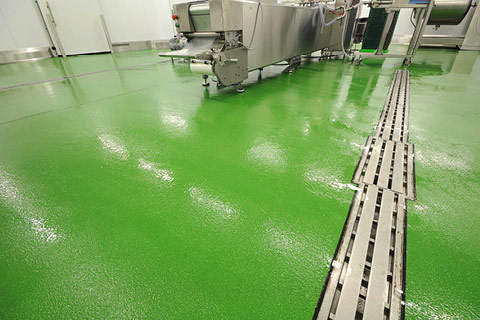
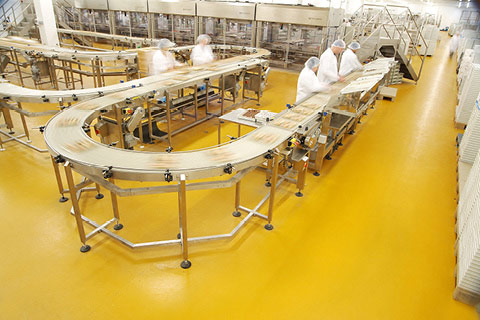
Alternative materials struggle to provide this life-span when faced with operational challenges such as steam cleaning at up to 120°C, point loading from heavy production equipment, exposure to corrosive industrial chemicals such as sodium hydroxide and nitric acid as well as the intensive cleaning and long hours inherent to the sector.
An MMA quartz systems derives strength from its monolithic structure. However, with this type of system a thin wearing coat is required to stop the aggregates and finish from getting scratched or abraded. This final layer, which isn’t required for PU floors, will usually need to be recoated every couple of years.
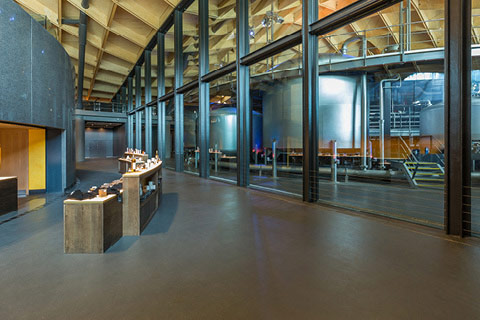
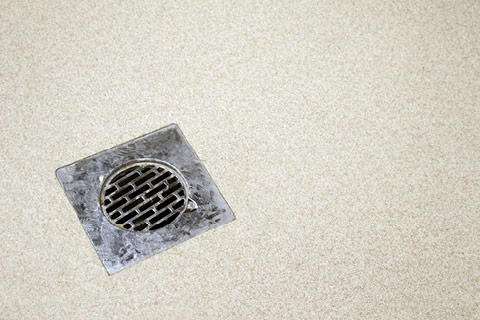
The Cure for Curing
The key advantage of an MMA system is that it is able to fully cure in a matter of hours, regardless of onsite conditions and ambient temperatures. Thanks to the way that it fuses to the substrate it is also very useful for refurbishments, as it can be applied directly on top of the existing coating and therefore avoids the cost and time required to take up the old floor.
PUs have historically been less versatile when it comes to being applied in extreme temperatures, in wet locations or within tight turnarounds. Recent advances in PU technology though has closed this gap, with systems such as Flowfresh HF LT being much easier to apply than traditional PU products in cold and wet settings.
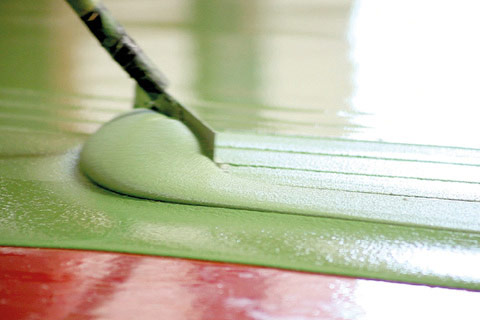
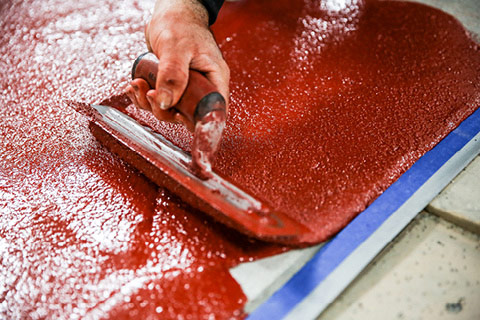
The main downside to how an MMA cures is that it releases a powerful odour that can taint nearby food produce. This problem can be avoided with proper ventilation, as MMA particles are heavier than air and so can be drawn out of the environment. Dealing with the odour is therefore possible but does incur extra time, expense and effort.
Don’t Slip Up on Flooring Specification
Both formulations have a textured finish, which enhances traction underfoot and helps to cut down on slips and trips in working environments that are often prone to wet conditions, spillages and frequent washes. It’s important to bear in mind that the more heavily textured a surface is, the more difficult it becomes to clean. The size and type of aggregates incorporated into a PU or MMA floor are often tailored to meet the required cleanability/slip resistance balance.
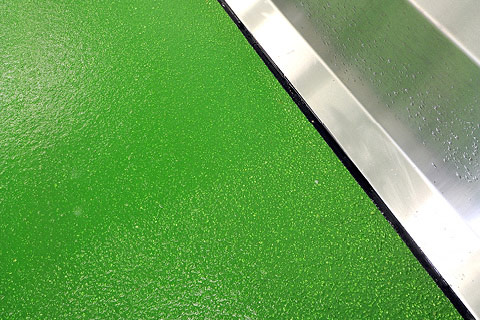
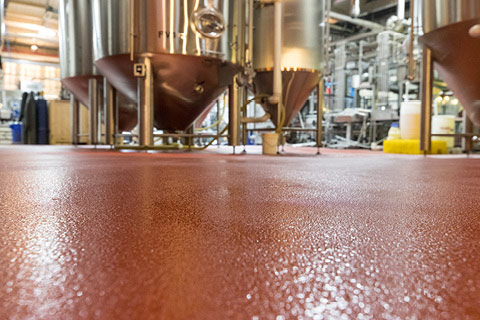
This was the case at McVitie’s production facility in Glasgow, which used the solvent-free, heavy duty polyurethane system Flowfresh RT in two different textures. A rougher finish was applied throughout the majority of the building where staff would be walking and a smoother version was installed beneath the production lines in order to make these hard-to-reach spots easier to clean.
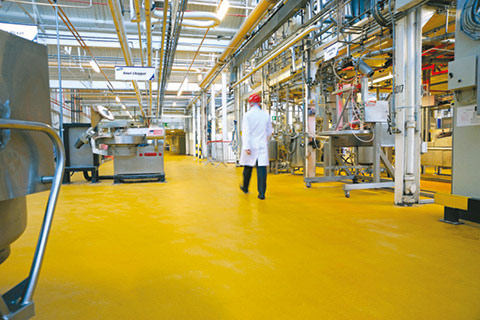
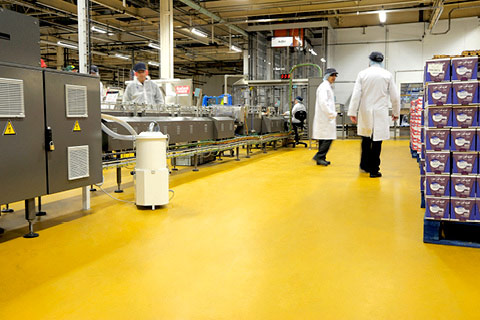
This project highlights the versatility of polyurethane in general, as it is very easy to change factors such as the floor’s thickness, texture and colour to suit the business’ needs. It is also easy to incorporate additional flooring elements such as coving and stainless steel drainage and to apply the floor around equipment, pillars or pipes that contact the floor.
From this we can see that the ideal choice of floor, whether it’s PU or MMA quartz, relies on the specific requirements of each F&B plant and can even change quite drastically from one part of a room to another. To understand if a flooring material is the right one, it is important to discuss in detail the demands that it will face as well as the suitability of the system in question with the flooring manufacturer and contractor.
ENDS
Enjoy this post? Click below to share it with your network:
Press Contact
For more information please visit www.flowcrete.co.uk/contact-us/ or contact Daniel Ash at Flowcrete Group’s Marketing department on 01270 753 000 or email dan.ash@flowcrete.com.
Notes to Editors
Flowcrete UK has its headquarters in Sandbach, Cheshire and is part of Flowcrete Europe & Middle East, one of the four divisions that make up Flowcrete Group Ltd.
Flowcrete Group Ltd. is a world leader in the manufacture of seamless industrial and commercial resin floor, wall and coving solutions as well as other specialist coating technologies. Flowcrete Group Ltd. has international manufacturing facilities in Europe and Africa as well as Central and South East Asia.
Flowcrete supplies world-class seamless flooring solutions to transform environments across the globe including; decorative seamless resins, waterproof car park deck coating systems, seamless resin terrazzo, durable antimicrobial flooring, corrosion protection, self levelling underlayments, underfloor heating and now underfloor acoustic insulation.
Flowcrete's ambitious and dedicated team is inspired by excellence in people, products and service, as well as continual innovation and sustainable growth. Flowcrete continues to use its global expertise to introduce environmentally friendly, hygienic and aesthetically attractive floors to create a better and more sustainable world.
For further information please contact 01270 753000 or visit us on the web at www.flowcrete.co.uk.

